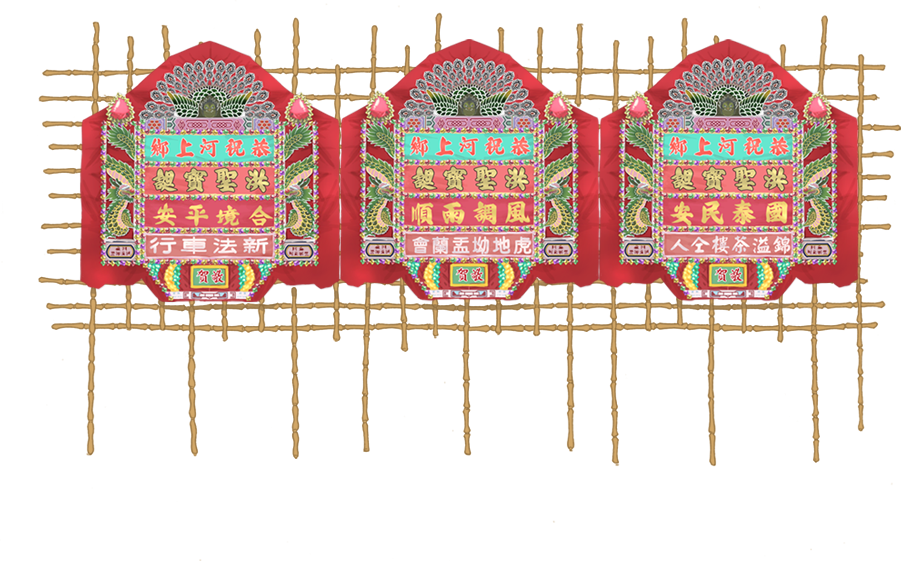At 1 pm, the representatives of different lion dance or floral tribute societies gather at the open area in front of the temple, at the centre of which a tribute scaffolding is placed. As the person-in-charge lights the fuse, a bamboo tube, representing the floral tribute, is launched into the air, and all villagers scramble to grab the tube. The next year, the tribute is returned together with such gifts as roasted suckling pig, lantern, tribute silver and fragrant oil. The event launches 7 Paper floral tributes each year and each tribute has an auspicious names. Those who scrambled for the Floral Tributes believe that it would bring good luck.
The scrambling of the first few Floral Tributes are the most vigorous. Later, with some of the organizations already scored, there are fewer competitors. This is why the first Floral Tribute is seen as the most significant and the items and cash that are returned with this tribute are the richest. Even those in the same village would scramble and even quarrel over the tribute, if they belong to different tribute societies.











